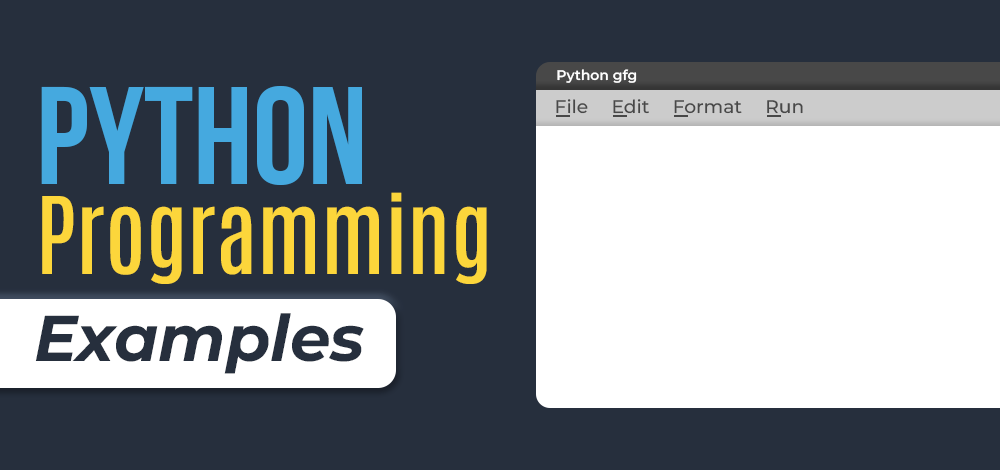
Welcome to the fascinating journey of Learning Natural Language Processing (NLP). This comprehensive guide is designed to take you from the basics to advanced concepts, providing a clear roadmap for anyone looking to master the art of teaching machines the subtleties of human language.
Imagine a world where computers understand not just the words we type but the intent behind them. That’s the promise of NLP. It’s not about programming languages; it’s about bridging the gap between human communication and digital data. This tutorial will illuminate the path to NLP proficiency, ensuring that every step is clear, actionable, and accessible.
Acquire foundational and sophisticated insights into natural language processing (NLP) through our all-encompassing NLP tutorial, and prepare to delve into the expansive and thrilling domain of NLP, the intersection of technological innovation and linguistic expression.
Our NLP tutorial caters to novices and seasoned practitioners alike. It doesn’t matter if you’re a data scientist, a software engineer, or simply a enthusiastic of language—this guide is equipped to arm you with the essential expertise and capabilities to elevate your grasp of NLP.
The Basics of NLP
What is NLP?
NLP stands for Natural Language Processing. It is the branch of Artificial Intelligence that gives the ability to machine understand and process human languages. Human languages can be in the form of text or audio format.
NLP combines computational linguistics—rule-based modelling of human language—with statistical, machine learning, and deep learning models. Together, these technologies enable computers to process human language in the form of text or voice data and understand its full meaning, complete with the speaker’s or writer’s intentions and sentiments.
History of NLP
The inception of Natural Language Processing (NLP) can be traced back to 1950 when Alan Mathison Turing published his seminal paper “Computing Machinery and Intelligence,” laying the groundwork for what would become a key area of Artificial Intelligence.
This paper discussed the automated interpretation and generation of natural language. Over time, various methodologies have emerged to address NLP tasks:
- Heuristics-Based NLP: The earliest strategy in NLP, this approach relies on predefined rules derived from domain knowledge and expertise, such as regular expressions (regex).
- Statistical Machine Learning-Based NLP: Utilizing statistical principles and machine learning algorithms, this method involves training algorithms on data to perform a variety of tasks. Notable examples include Naive Bayes, support vector machines (SVM), and hidden Markov models (HMM).
- Neural Network-Based NLP: Representing the cutting-edge in NLP, this approach leverages neural network-based learning, or Deep Learning. Known for its high accuracy, it is nonetheless resource-intensive, requiring vast amounts of data and significant computational power for model training. It employs neural network architectures like Recurrent Neural Networks (RNNs), Long Short-Term Memory networks (LSTMs), Convolutional Neural Networks (CNNs), and Transformers.
Components of NLP
Indeed, Natural Language Processing (NLP) comprises two fundamental components:
- Natural Language Understanding (NLU): This aspect involves the interpretation of human language by machines, enabling them to grasp the meaning, sentiment, and intent behind the words.
- Natural Language Generation (NLG): This facet is about the production of human-like language by machines, allowing them to construct sentences, narratives, and responses that are coherent and contextually appropriate.
Applications of NLP
Together, NLU and NLG enable machines to interact with human language in a way that is both comprehensible and natural, forming the essence of NLP. Natural Language Processing (NLP) has a wide array of applications that have become integral to our daily digital interactions, They include:
- Text and Speech Processing: This includes voice-activated assistants such as Alexa and Siri, which can understand and respond to verbal commands.
- Text Classification: Tools like Grammarly, Microsoft Word, and Google Docs use NLP to check grammar and style, enhancing written communication.
- Information Extraction: Search engines like DuckDuckGo and Google utilize NLP to parse and understand search queries to retrieve relevant information.
- Chatbots and Question Answering Systems: Online bots on websites provide instant responses to user inquiries, simulating a human conversation.
- Language Translation: Services like Google Translate employ NLP to convert text or speech from one language to another, breaking down language barriers.
- Text Summarization: NLP algorithms can condense long pieces of text into concise summaries, preserving the core message and context.
These applications showcase the transformative impact of NLP in simplifying and enriching human-machine interactions.
Phases of Natural Language Processing

Components of NLP
- Syntax and Semantics: At the heart of NLP lies the understanding of syntax—the arrangement of words to make sentences—and semantics, the meaning behind those words and sentences.
- Machine Learning Algorithms: These are the engines of NLP, turning the gears as they learn from data patterns and linguistic structures.
- Practical Applications: From chatbots to translation services, NLP powers a wide array of tools that make our lives easier.
Advanced Topics in NLP
As you delve deeper into NLP, you’ll encounter advanced topics such as;
¡》Sentiment analysis, which discerns the emotional tone behind words
¡¡》Named entity recognition, which identifies and categorizes key information in text.
Building Your NLP Toolkit
To embark on your NLP adventure, you’ll need a toolkit. Python is a popular choice due to its extensive libraries and frameworks designed specifically for NLP tasks. Libraries like NLTK, SpaCy, and TensorFlow are staples for any aspiring NLP practitioner.
Complete NLP Learning Path and Tutorial
Here is the complete Roadmap and Learning Path to understand and mastering Natural Language Processing.
1. NLP Libraries
- NLTK
- Spacy
- Gensim
- fastText
- Stanford toolkit (Glove)
- Apache OpenNLP
2. Classical Approaches
Classical Approaches to Natural Language Processing
- Text Preprocessing
- Regular Expressions
- How to write Regular Expressions?
- Properties of Regular expressions
- Text Preprocessing using RE
- Regular Expression
- Email Extraction using RE
- Tokenization
- White Space Tokenization
- Dictionary Based Tokenization
- Rule-Based Tokenization
- Regular Expression Tokenizer
- Penn Treebank Tokenization
- Spacy Tokenizer
- Subword Tokenization
- Tokenization with Textblob
- Tokenize text using NLTK in python
- How tokenizing text, sentences, and words works
- Lemmatization
- Stemming
- Types
- Porter Stemmer
- Lovins Stemmer
- Dawson Stemmer
- Krovetz Stemmer
- Xerox Stemmer
- Types
- Stopwords removal
- Removing stop words with NLTK in Python
- Parts of Speech (POS)
- Part of Speech – Default Tagging
- Part of speech tagging – word corpus
- Part of Speech Tagging with Stop words using NLTK in python
- Part of Speech Tagging using TextBlob
- Text Normalization
- Regular Expressions
- Text Vectorization or Encoding:
- vector space model (VSM)Words and vectorsCosine similarityBasic Text Vectorization approach:
- One-Hot EncodingByte-Pair Encoding (BPE)Bag of words (BOW)N-GramsTerm frequency Inverse Document Frequency (TFIDF)N-Gram Language Modelling with NLTK
- Word EmbeddingsPre-Trained Word Embeddings
- Word Embedding using Word2VecFinding the Word Analogy from given words using Word2Vec embeddings
- vector space model (VSM)Words and vectorsCosine similarityBasic Text Vectorization approach:
- GloVe
- Universal Text Representations
- Embeddings from Language Models (ELMo)Bidirectional Encoder Representations from Transformers (BERT)
- t-sne (t-distributed Stochastic Neighbouring Embedding)TextEvaluator
- Embeddings semantic properties
- Universal Text Representations
- Semantic Analysis
- What is Sentiment Analysis?
- Understanding Semantic Analysis
- Sentiment classification:
- Naive Bayes Classifiers
- Logistic Regression
- Sentiment Classification Using BERT
- Twitter Sentiment Analysis using textblob
- Parts of Speech tagging and Named Entity Recognizations:
- Parts of Speech tagging with NLTK
- Parts of Speech tagging with spacy
- Hidden Markov Model for POS tagging
- Markov Chains
- Hidden Markov Model
- Viterbi Algorithm
- Conditional Random Fields (CRFs)
- Conditional Random Fields (CRFs) for POS tagging
- Named Entity Recognition
- Rule Based Approach
- Named Entity Recognizations
- Neural Network for NLP:
- Feedforwards networks for NLP
- Recurrent Neural Networks
- RNN for Text Classifications
- RNN for Sequence Labeling
- Stacked RNNs
- Bidirectional RNNs
- Long Short-Term Memory (LSTM)
- LSTM with Tensorflow
- Bidirectional LSTM
- Gated Recurrent Unit (GRU)
- Sentiment Analysis with RNN,LSTM, GRU
- Emotion Detection using Bidirectional LSTM & GRU
- Transformers for NLP
- Transfer Learning for NLP:
- Bidirectional Encoder Representations from TransformersRoBERTaSpanBERT
- Transfer Learning with Fine-tuning
- Informations Extractions
- Keyphrase Extraction
- Named Entity Recognition
- Relationship Extraction
- Information Retrieval
- Text Generations
- Text Generations introductions
- Text summarization
- Extractive Text Summarization using Gensim
- Questions – Answering
- Chatbot & Dialogue Systems:
- Simple Chat Bot using ChatterBot
- GUI chat application using Tkinter
- Machine translation
- Machine translation Introductions
- Statistical Machine Translation Introduction
- Phonetics
- Implement Phonetic Search in Python with Soundex Algorithm
- Convert English text into the Phonetics
- Speech Recognition and Text-to-Speech
- Convert Text to Speech
- Convert Speech to text and text to Speech
- Speech Recognition using Google Speech API
3. Empirical and Statistical Approaches
- Treebank Annotation
- Fundamental Statistical Techniques for NLP
- Part-of-Speech Tagging
- Rules-based system
- Statistical Parsing
- Multiword Expressions
- Normalized Web Distance and Word Similarity
- Word Sense Disambiguation
Conclusion
NLP is a gateway to the future of human-computer interaction. By understanding and leveraging the power of NLP, you can open up a world of possibilities. Whether you’re a developer, a data scientist, or just an enthusiast, the knowledge of NLP will serve as a powerful tool in your arsenal.
Remember, the road to NLP mastery is not a sprint; it’s a marathon. With each step forward, you’ll uncover more layers, more insights, and more opportunities to apply this incredible technology. So, take this guide as your starting point, and let the adventure begin.
RELATED ARTICLES
- Data Science With Python Tutorial & Complete Roadmap
- Machine Learning Tutorial & Roadmap
- Deep Learning Tutorial & Roadmap
- Computer Vision Tutorial & Roadmap
- Python Programming Language Tutorial & Roadmaps.










Robert Lewandowski https://robertlewandowski.prostoprosport-ar.com is a Polish footballer, forward for the Spanish club Barcelona and captain of the Polish national team. Considered one of the best strikers in the world. Knight of the Commander’s Cross of the Order of the Renaissance of Poland.
волчонок смотреть онлайн все сезоны https://volchonok-tv.ru
buy 50 tiktok likes buy tiktok likes
Lionel Andres Messi Cuccittini https://lionelmessi.prostoprosport-ar.com is an Argentine footballer, forward and captain of the MLS club Inter Miami, captain of the Argentina national team. World champion, South American champion, Finalissima winner, Olympic champion. Considered one of the best football players of all time.
Cristiano Ronaldo https://cristiano-ronaldo.prostoprosport-ar.com is a Portuguese footballer, forward, captain of the Saudi Arabian club An-Nasr and the Portuguese national team. European Champion. Considered one of the best football players of all time. The best scorer in the history of football according to the IFFIS and fourth according to the RSSSF